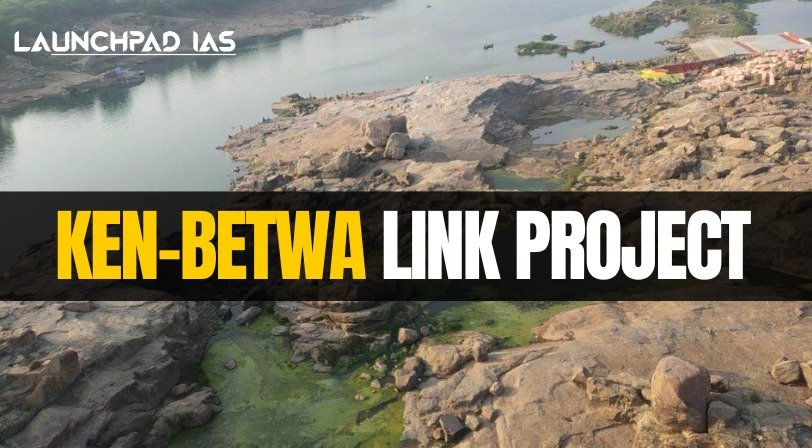About
- The Ken-Betwa Link Project (KBLP) is the first project under the National Perspective Plan for the interlinking of rivers, which aims to transfer surplus water from one river basin to another to address water scarcity and enhance irrigation.
- The KBLP involves transferring water from the Ken River in Madhya Pradesh to the Betwa River in Uttar Pradesh, both of which are tributaries of the Yamuna River.

Phases of the Project
The project has two phases, with mainly four components.
- Phase I will involve one of the components — the Daudhan Dam complex and its subsidiary units such as the Low-Level Tunnel, High-Level Tunnel, Ken-Betwa Link Canal, and powerhouses.
- Phase II will involve three components: the Lower Orr Dam across the Orr River, a tributary of the Betwa, the Bina Complex Project, and the Kotha Barrage.
Significance of Ken-Betwa Link Project
- KBLP will not only accelerate water conservation by the construction of a multipurpose dam but will also produce 103 MW of hydropower and will supply drinking water to 62 lakh people.
- The linking canal will flow through Chhatarpur, Tikamgarh, and Jhansi districts, with the project expected to irrigate 6.3 lakh hectares of land every year.
What are Ken and Betwa Rivers?
- Ken and Betwa rivers originate in MP and are the tributaries of Yamuna.
- Ken meets with Yamuna near the Banda district of Uttar Pradesh and Betwa joins Yamuna in the Hamirpur district of UP.
- Rajghat, Paricha, and Matatila dams are over the Betwa River.
- Ken River passes through the Panna Tiger Reserve.
Environmental and social concerns
- Environmental Impacts
- Deforestation in Panna National Park: The project will result in large-scale deforestation, with around 98 sq km of the park submerged and 2–3 million trees felled.
- Threat to Wildlife:
- Tigers: The Daudhan Dam, located inside the Panna National Park, could undermine the successful tiger reintroduction program that revived the population after local extinction in 2009.
- Gharials and Vultures: Likely to affect the Gharial population in the Ken Gharial Sanctuary and disrupt vulture nesting sites downstream.
- Hydrological Concerns:
- IIT-Bombay scientists warn the project could reduce September rainfall by up to 12% due to disruptions in land-atmosphere feedback.
- Experts demand transparency in Ken River’s hydrological data for a thorough review.
- Social Impacts
- Displacement: The dam will displace 5,228 families in Chhatarpur district and 1,400 families in Panna district due to submergence and land acquisition.
- Inadequate Compensation: Protests have erupted over perceived inadequate compensation and minimal benefits for affected communities, particularly in Panna district.
Controversies and Criticism Surrounding the Project
- Wildlife and Environmental Clearance: The Supreme Court’s Central Empowered Committee (CEC) questioned the wildlife clearance and the project’s economic viability.
- Violation of Precedents: The Union Environment Ministry approved construction within the core of the Panna Tiger Reserve, despite no precedent for such heavy infrastructure in national parks or tiger reserves.


